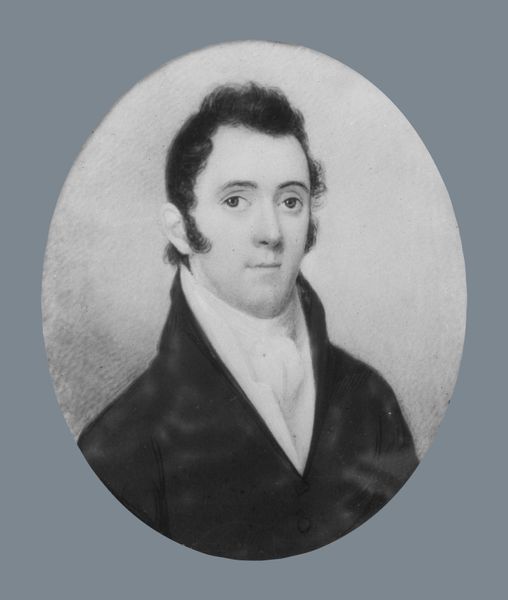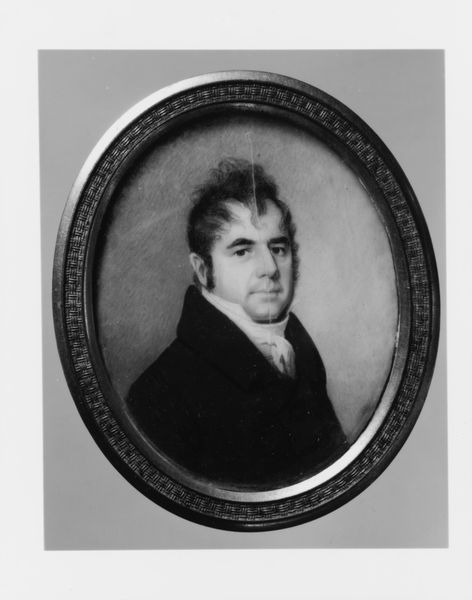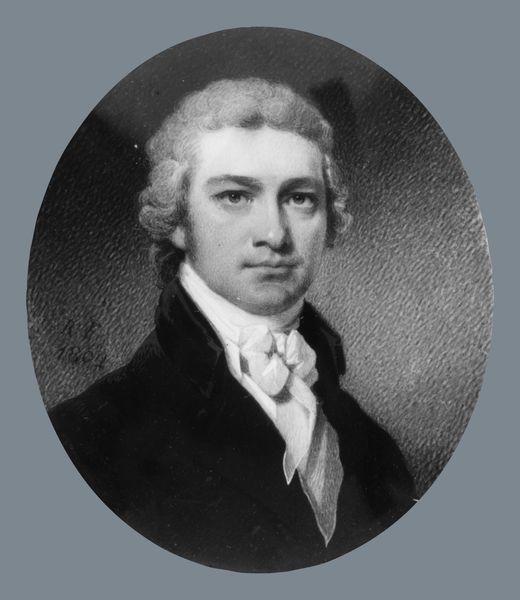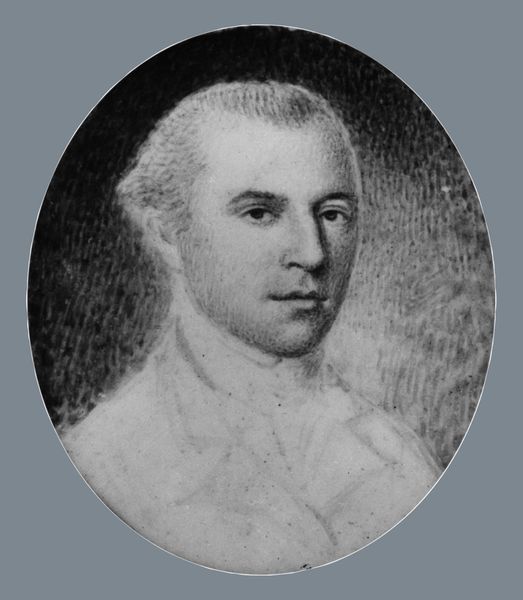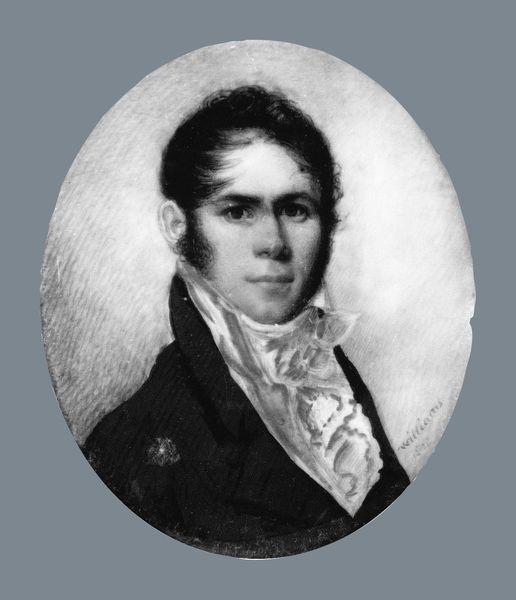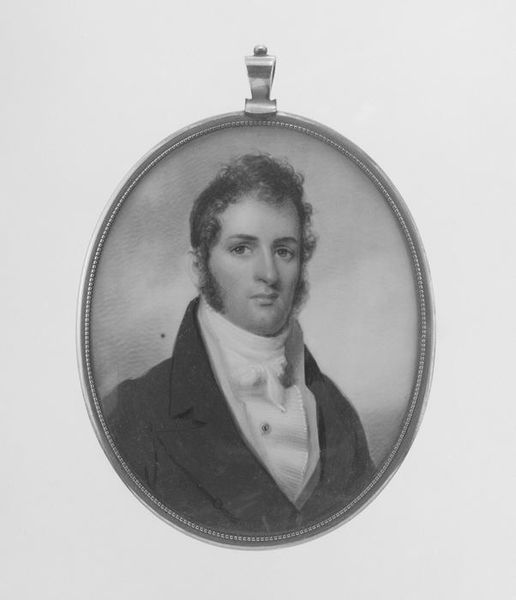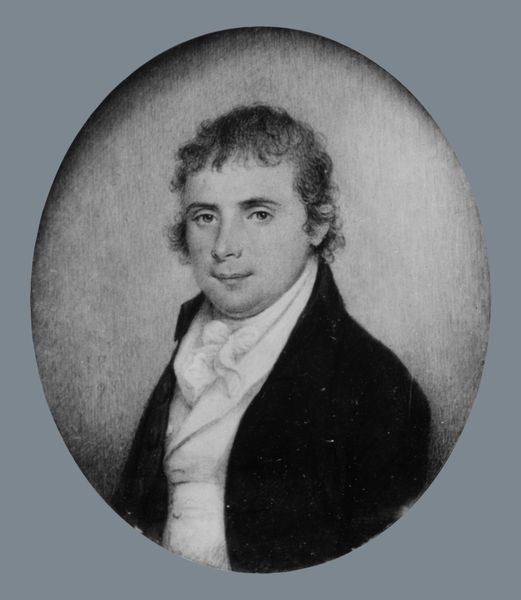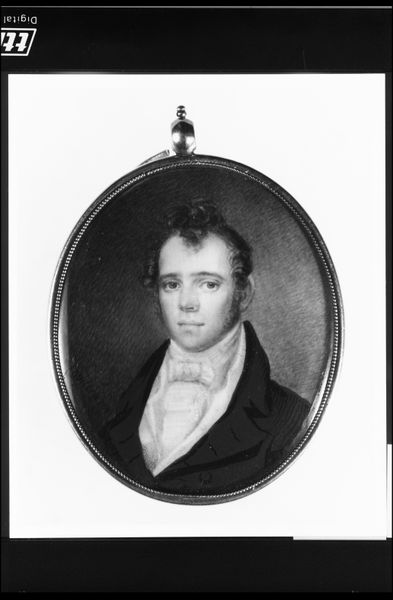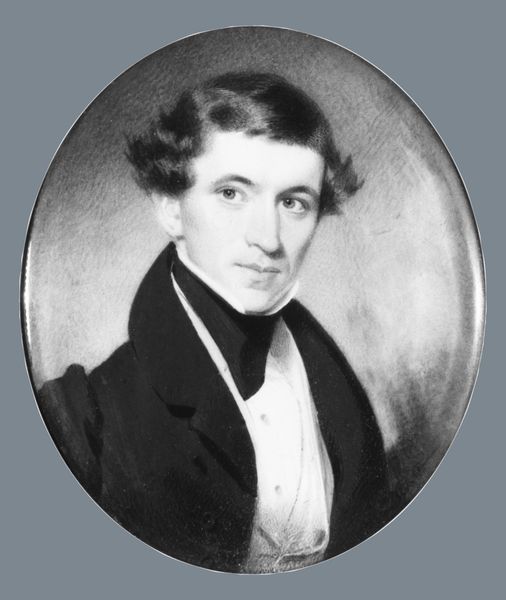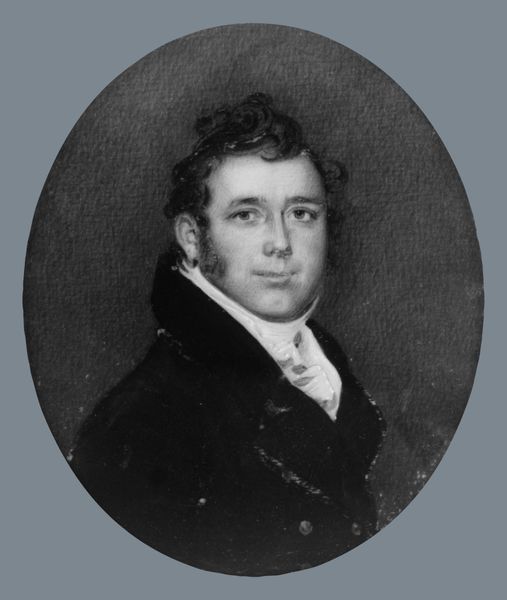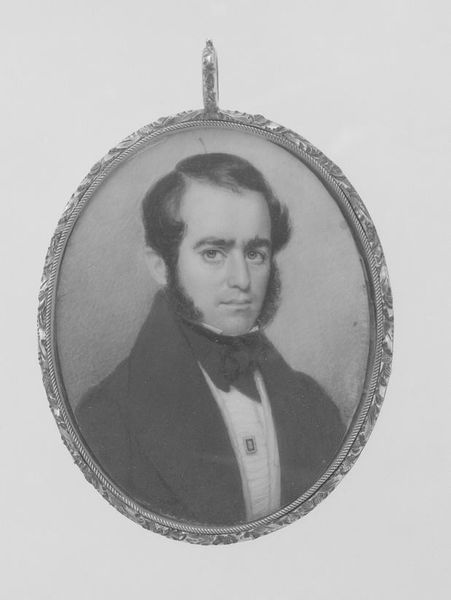
oil-paint
#
portrait
#
neoclacissism
#
portrait
#
oil-paint
#
miniature
Dimensions: Sight: 2 7/16 x 2 in. (6.2 x 5.1 cm)
Copyright: Public Domain
Andrew Robertson painted this miniature portrait of Captain Graham using watercolor on ivory. Consider the material: ivory, derived from elephant tusks, was highly prized for its smooth surface and subtle grain. Robertson would have prepared the ivory meticulously, creating a receptive ground for the delicate washes of watercolor. Look closely, and you can see the thinly applied layers, built up to create depth and form. This wasn't just a matter of artistic skill; it was labor, pure and simple. Each layer demanded time and precision, reflecting the values of a society that prized refinement. Miniature portraits like this were popular in the late 18th and early 19th centuries, offering a tangible connection to loved ones. They also served as status symbols, reflecting the sitter's position in society, and the artist's skill in capturing their likeness with such painstaking detail. Robertson’s delicate rendering elevates the artistry and the value of this piece beyond its small scale. Ultimately, understanding the material and the making allows us to appreciate the intricate balance between artistry, labor, and social context that defines this miniature masterpiece.
Comments
No comments
Be the first to comment and join the conversation on the ultimate creative platform.
